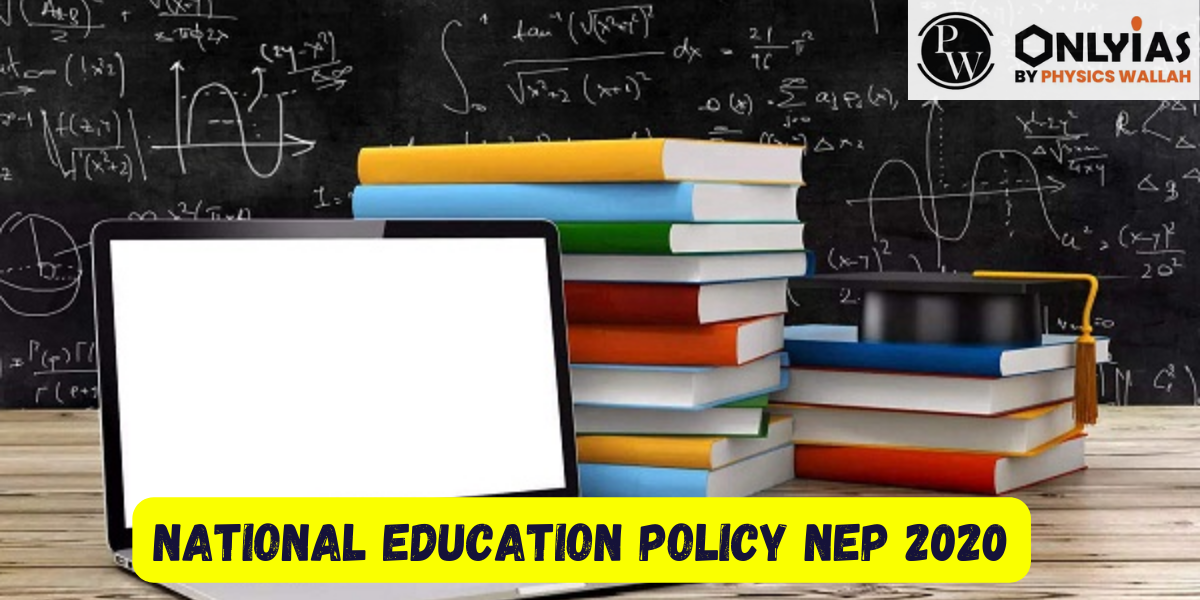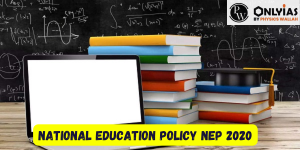The National Education Policy 2020 aims to transform India’s education system with a focus on access, equity, quality, affordability, and accountability.

National Education Policy (NEP) 2020: The National Education Policy (NEP) 2020 aims to transform India into an equitable and vibrant knowledge society by providing high-quality education to all. It is built on the pillars of Access, Equity, Quality, Affordability, and Accountability, preparing youth to face national and global challenges. In school education, the policy emphasizes cognitive, social, and emotional skill development, universalizes pre-primary education, and reforms curriculum with a 5+3+3+4 structure. In higher education, it promotes multidisciplinary learning, institutional autonomy, and quality research. NEP 2020 also aims to align education with India’s cultural values and use technology to improve learning and teaching.

Here’s a concise facts table summarizing the overview of the National Education Policy (NEP) 2020 based on the provided content:
| Aspect | Details |
| Objective | Overhaul education system to meet 21st-century goals and SDG 4 while preserving cultural heritage. |
| Replaced | National Policy on Education, 1986 (modified in 1992). |
| Salient Features | – Universal access from preschool to secondary education.
– Transition to a 5+3+3+4 system for early childhood education. – Multilingual instruction with emphasis on mother tongues up to Grade 5. – Inclusive education with focus on SEDGs and children with disabilities. |
| Gross Enrolment Ratio (GER) | Aims to raise GER from 26.3% to 50% by 2035, adding 3.5 crore new seats. |
| Research Focus | Establishment of the National Research Foundation to enhance research capacity. |
| Language Preservation | Support for Indian languages through the Institute of Translation and Interpretation. |
| Internationalisation | Encouragement for foreign universities to establish campuses in India. |
| Funding | Target to increase public investment in education to 6% of GDP. |
| Assessment Center | Introduction of PARAKH for holistic and competency-based assessments. |
| Gender Inclusion | Establishment of a Gender Inclusion Fund to promote gender equality in education. |
| Special Education Zones | Creation of zones to support disadvantaged regions and groups for equitable access. |
Ministry of Education is celebrating the 4th anniversary of National Education Policy 2020 with the week-long campaign, “Shiksha Saptah.” The Department of School Education & Literacy hosted a thematic session on the National Curriculum Framework (NCF) during the Akhil Bhartiya Shiksha Samagam, commemorating the 4th anniversary of the National Education Policy (NEP) 2020. This session detailed:
The National Education Policy (NEP) 2020 is a landmark document that heralds a new era in the Indian education system. Approved by the Union Cabinet in July 2020, the NEP aims to revolutionize education in India and prepare the country’s youth for the challenges and opportunities of the 21st century. It seeks to address the shortcomings of the previous education policy and proposes a comprehensive framework to make education more inclusive, flexible, and multidisciplinary.
The NEP 2020 outlines several key objectives that serve as the foundation for the proposed reforms:
Implementing such an ambitious and wide-ranging policy poses several challenges. Funding, infrastructure, teacher training, and coordination among various stakeholders are some of the significant obstacles. Moreover, ensuring uniform implementation across diverse states and regions remains a challenge.

Education has always been a vital aspect of India’s growth and development. Throughout its history, the country has witnessed various changes in its educational policies to adapt to the evolving needs of society and economy. The government of India has consistently strived to improve the quality of education and enhance access to learning opportunities for all citizens. In this article, we will explore the major milestones in India’s education sector by examining the various National Education Policies (NEPs) implemented over the years.
The first comprehensive National Education Policy of independent India was formulated in 1968. This policy aimed to promote a uniform educational structure across the country, focusing on improving access to primary education, adult literacy, and technical education. The NEP 1968 sought to implement a 10+2+3 education system, where schooling would consist of ten years of primary and secondary education, followed by a three-year undergraduate degree.
With the realization that the NEP 1968 did not adequately address the emerging challenges in the education sector, the government introduced the National Policy on Education in 1986. This policy aimed to modernize and internationalize education while giving due importance to India’s rich cultural heritage. Key objectives included the universalization of primary education, promoting science and technology education, and strengthening vocational education. NEP 1986 also emphasized the integration of education for children with special needs and the establishment of the National Council of Educational Research and Training (NCERT) and the National Open School (now known as the National Institute of Open Schooling, NIOS).
The National Policy on Education 1986 underwent an amendment in 1992, resulting in the Program of Action. This program addressed the challenges in the implementation of the NEP 1986 and provided a roadmap for achieving its objectives. It focused on decentralization of education, enhancing the role of teachers, promoting value-based education, and strengthening vocational education to address unemployment issues.
The National Education Policy 2020 marks a significant reform in India’s education landscape. After a gap of almost three decades, this policy was formulated to meet the needs of the 21st century and address the complexities of an ever-changing world. NEP 2020 envisions transforming the Indian education system to empower learners with critical thinking, creativity, and holistic development.
A. Early Childhood Care and Education (ECCE): Introducing foundational learning in early years (ages 3-6) and integrating ECCE into the formal education system.
B. School Education: Implementing a 5+3+3+4 curricular and pedagogical structure, emphasizing experiential learning and reducing the curriculum load. Vocational education will be introduced from the 6th grade.
C. Higher Education: Transforming higher education by promoting multidisciplinary learning, allowing for multiple exit points, and integrating research into the undergraduate curriculum.
D. Teacher Education: Revamping teacher training programs to enhance the quality of educators and introducing a four-year integrated B.Ed. program.
E. Digital Education: Integrating technology into education to improve access, equity, and quality of learning.
F. Gender Inclusion: Ensuring equal opportunities and promoting the participation of all genders in education.
G. National Research Foundation (NRF): Establishing an NRF to fund and promote research across disciplines.
H. Graded Autonomy: Granting greater autonomy to educational institutions to foster innovation and creativity.
Join top courses from Physics Wallah to increase your chances of cracking UPSC 2025. Enroll now!
The New Education Policy 2023, known as NEP 5+3+3+4 Education System, seeks to revolutionize our current educational structure. It adopts an innovative approach, incorporating contemporary teaching techniques, harnessing technology's potential, and fostering practical skill-based learning.
नई शिक्षा नीति 2023, जिसे एनईपी 5+3+3+4 शिक्षा प्रणाली के रूप में जाना जाता है, हमारी वर्तमान शैक्षिक संरचना में क्रांतिकारी बदलाव लाना चाहती है। यह एक नवीन दृष्टिकोण अपनाता है, जिसमें समकालीन शिक्षण तकनीकों को शामिल किया जाता है, प्रौद्योगिकी की क्षमता का उपयोग किया जाता है और व्यावहारिक कौशल-आधारित शिक्षा को बढ़ावा दिया जाता है।
Inclusive access should be provided to elementary education of similar standards for all children, regardless of their caste, creed, location, or gender. Equity involves providing personalized assistance to students. Ensuring quality education is delivered to every student is essential. Additionally, education should be made affordable by offering free and compulsory schooling for students aged 3 to 18 years.
5: This refers to five years of primary education. 3: This represents three years of middle or junior high school. 3: This stands for three years of high school, typically grades 9th to 12th. 4: Finally, four years of tertiary education, which typically refers to college or university.

<div class="new-fform">
</div>